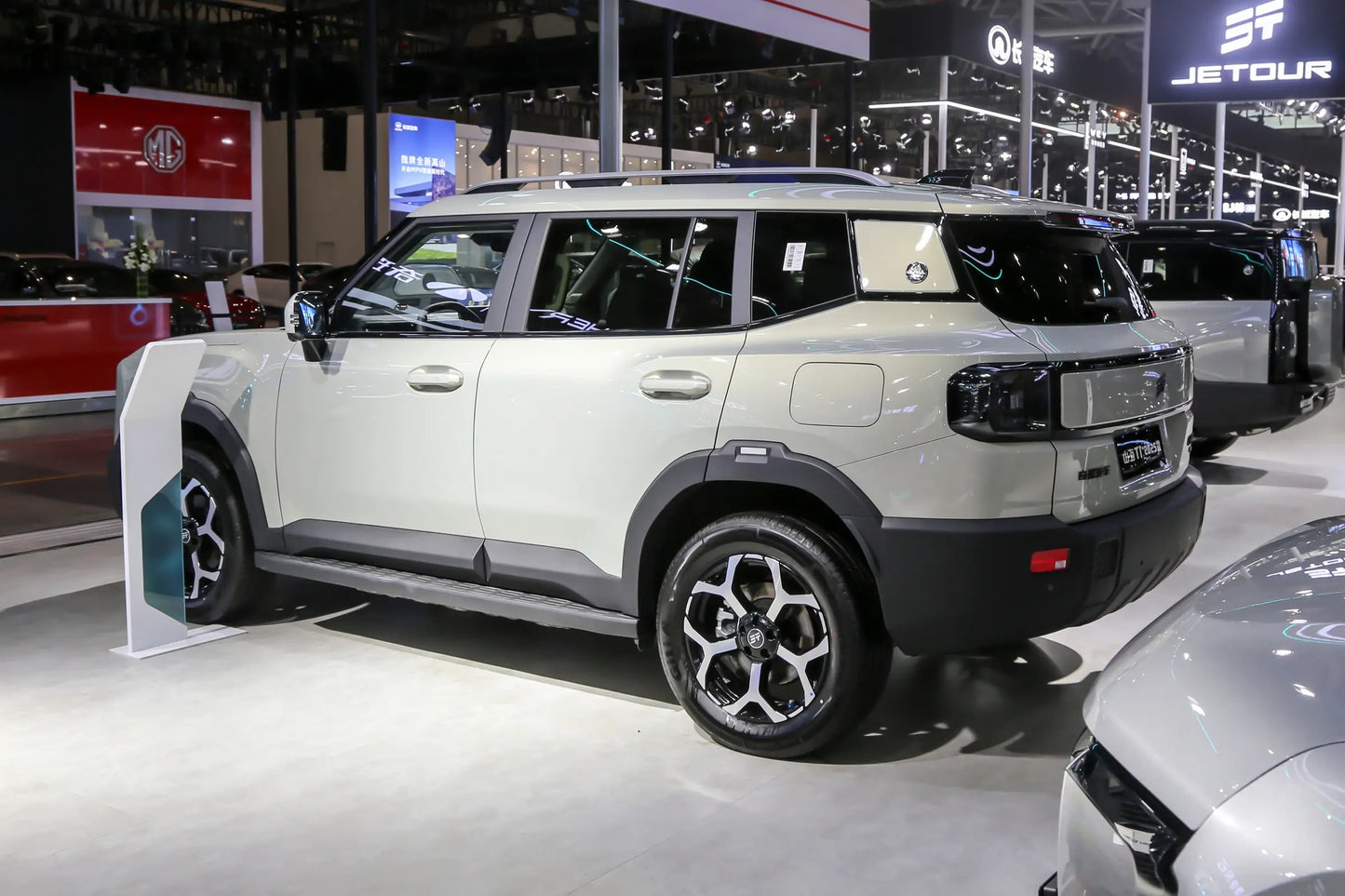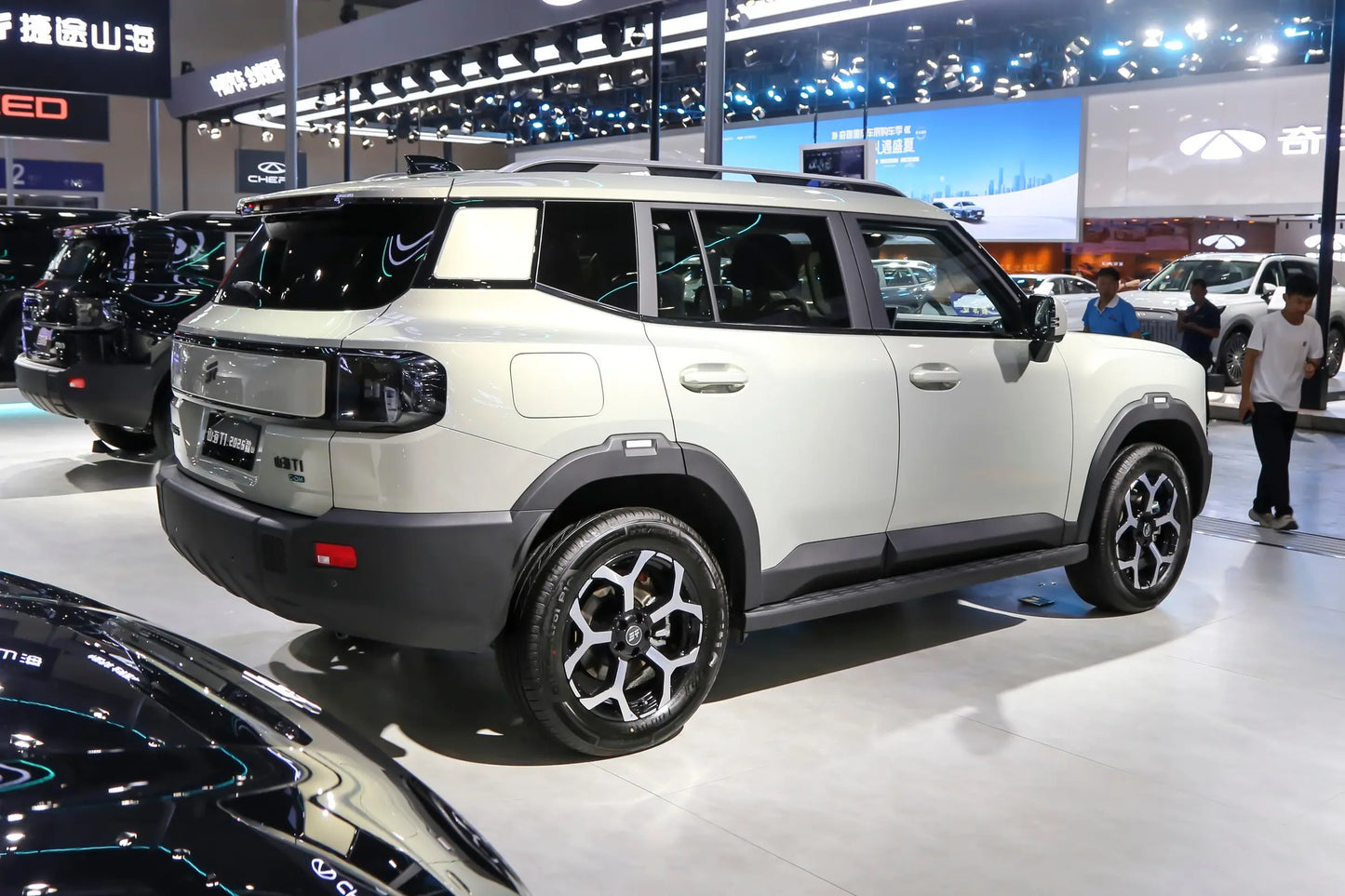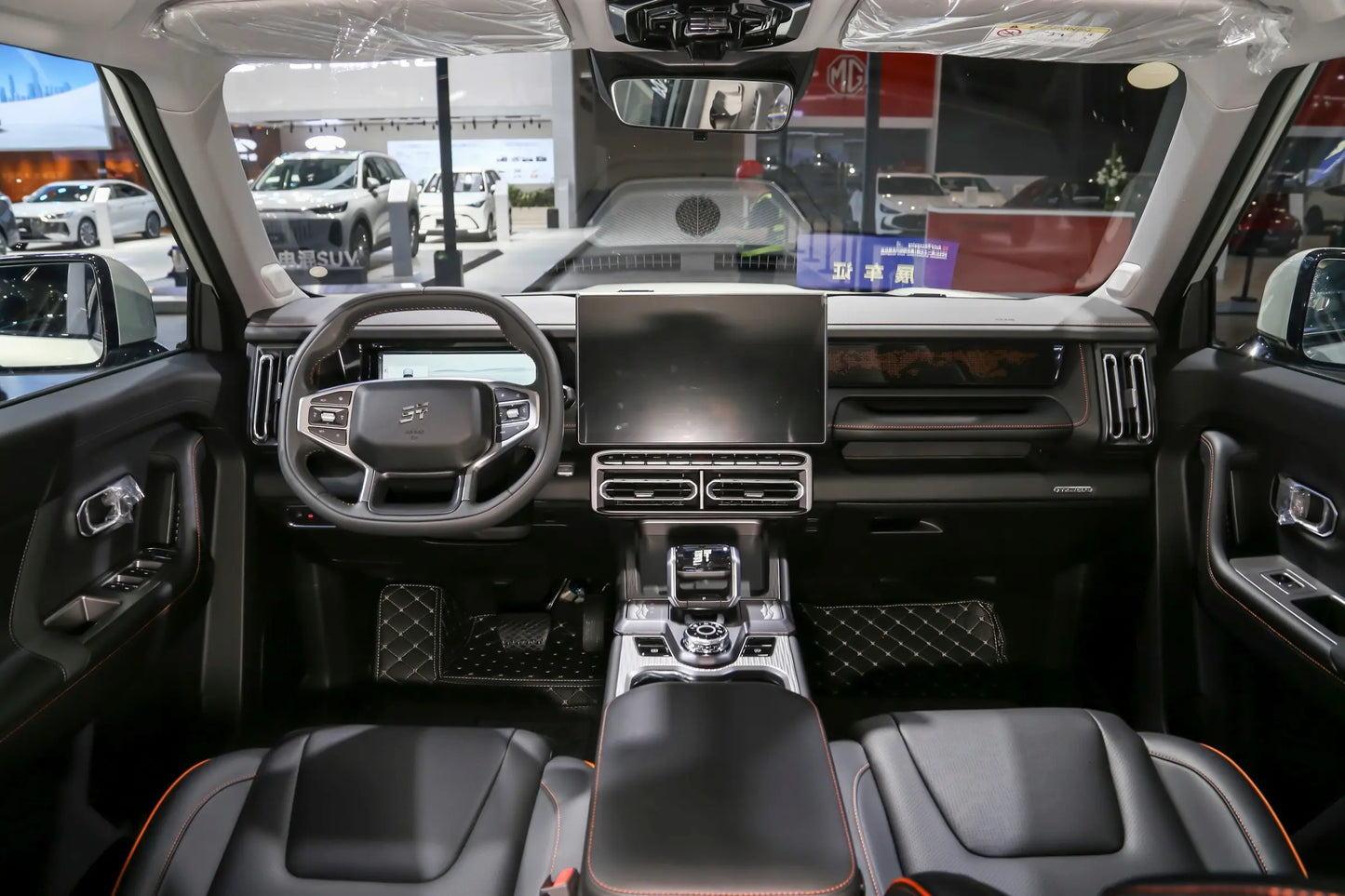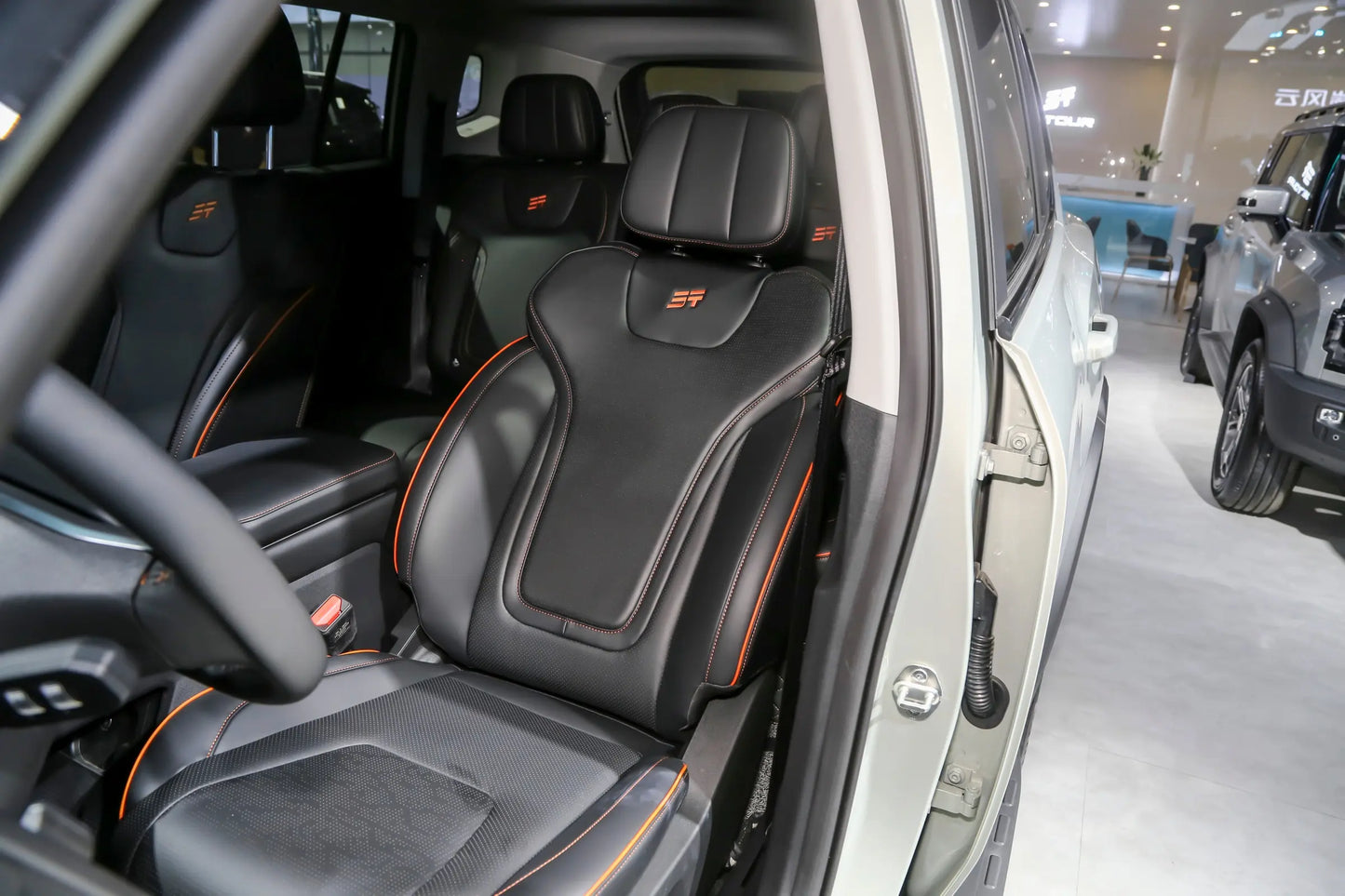MSRP (*Base Edition)
Hybrid PHEV | SUV | 76KM








$20,235.00 USD
-
BrandChery
-
Vechile ClassSUV
-
Energy TypeHybrid PHEV
-
Pure Electric Range(KM)76
-
Curb Weight (kg)/
-
Battery TypeLithium Iron Phosphate Battery
-
Total Power of Motor (KW)150
-
Maximum Power(KW)115
-
Total Torque of Motor(N・m)310
-
Maximum Torque(N・m)220
-
Length x Width x Height(mm)4706x1967x1845
-
Official 0-100km/h Acceleration Time(s)/
-
Power Consumption(kWh/100km)/
-
Equivalent Fuel Consumption (Electricity)(L/100km)/
-
Battery Capacity(kWh)18.3
-
MaximumSpeed(km/h)180
-
Motor LayoutFront-mounted
-
Transmission1-speed hybrid-dedicated transmission
-
Displacement(L)1.5
-
Intake TypeTurbocharging
-
IDph09038
Panoramic Interiors
Video Manual
Authentic on-site shots for an immersive vehicle detail experience
Real Customer Reviews
Source: DCAR
Review A
Let's talk briefly about the plug-in hybrid version of the Jetour Freelander.
In terms of exterior design, I think it looks better than other domestic "square box" models. Although it also has a square box-like shape, the inverted trapezoid front end lowers the visual center of gravity of the vehicle, making it look more stable. The lines on the side of the body are just right, not too many nor too few, unlike traditional square boxes which are stiff. This is worthy of praise.
The interior still leans towards a tough style, with an overall design that's somewhat exaggerated. Nowadays, even hardcore off-road vehicles like the Tank have relatively refined interiors, after all, most of the time they are driven in the city. The materials and detailed craftsmanship feel a bit cheap, but overall it's acceptable and not a major issue. The infotainment system performance is average; the desktop and menus only scratch the surface, and there is still a certain gap compared with BYD, Geely, etc. Among traditional car companies, basically only the top two or three are doing well in intelligence, while other brands perform generally.
In terms of space, the rear legroom is about two fists, and the headroom is about one fist. It is equipped with a panoramic sunroof and electric sunshade, which is a good performance for a compact SUV with a length of 4.7 meters. The trunk space is very large, and there is a 45-liter下沉 space under the cover (which is okay for a hybrid SUV). In addition to the 6.6 kW external discharge function outside the vehicle, there is also a 2.2 kW three-hole socket in the trunk, which can be connected to a refrigerator or a battery. The rear seats are quite flat when folded down, allowing you to sleep and camp in the car. Overall, the practicality of the trunk is very excellent.
In terms of power, the combination of a 1.5T engine and a front motor, with 156 horsepower for the engine and 204 horsepower for the front motor, the overall performance is good. The pure electric range of 150 kilometers is also acceptable, and there are no major problems with the power.
In terms of the chassis, the overall feeling is like driving a boat. It's softer than those SUVs with frame structures, making it more suitable for city driving. I haven't tested the off-road performance much, but I think this kind of SUV is sufficient for low-to-medium intensity off-road scenarios. Moreover, the plug-in hybrid model has good long-distance commuting capability and the external discharge function is also practical. So if you don't have particularly extreme off-road needs, buying this kind of car is sufficient.
Review B
Before changing cars, I had a joint-venture small-displacement fuel vehicle with a fuel consumption of about 7 liters per 100 kilometers. My daily car usage needs include commuting to and from work, which is about 65 kilometers. On weekends, I usually go for outings and camping around Chengdu, and take self-driving trips to Western Sichuan two to three times a year. The monthly fuel cost for the fuel vehicle was about 1,200 yuan. The trunk was a bit small, so many camping equipment couldn't fit, and the chassis was too low, which scraped the bottom many times when traveling. Therefore, I considered changing to a hybrid light off-road vehicle with a budget of about 150,000 yuan. Initially, I considered models like the 2025 Haval大狗 (Big Dog) and BJ45. Later, I accidentally saw the Shan Hai series and was immediately attracted by its bold exterior. After learning about it through various channels and test-driving, I confirmed that this car exactly met my needs. It has been more than 20 days since I picked up the car, and I have driven more than 2,000 kilometers. I went to Chenjiaba in Beichuan to see the magnolia flowers, and also went to Mount Emei and around Chengdu several times. Now let me talk about my driving experience. The nominal pure electric range is 150 kilometers, and the actual range of 120 kilometers is completely没问题 (the round trip for commuting is about 65 kilometers, and there is still 20% electricity left after two round trips); the power is completely sufficient for mild off-roading, and it can be easily handled in situations like Chenjiaba in Beichuan with a lot of 180-degree turns, about 40-degree slopes, some unpaved roads, and a road width of no more than three meters (however, it is not recommended for new drivers, as front-wheel drive vehicles are prone to front-wheel skidding when taking sharp turns on high slopes); the interior space is spacious, and after putting all the camping gear, there is still room for several suitcases. Folding down the rear seats and laying an air mattress turns it into a double bed. The external discharge function is also very practical, allowing you to cook hot pot, barbecue, boil water and make tea outdoors, enjoying the comfort of a slow life. Finally, regarding the cost of using the car, I have added two tanks of fuel so far, with half a tank left, costing about 700 yuan for fuel; I haven't installed a charging pile yet, and charging outside costs about 1.2 yuan per kWh, with charging costs about 150 yuan. The total distance is 2,400 kilometers, and most of the highways are driven in sport mode, about 1,500 kilometers. The overall cost per kilometer is a little over 0.3 yuan, and about 0.15 yuan per kilometer in pure electric mode. For a vehicle with a curb weight of two tons, this is completely acceptable! There are two things I'm most dissatisfied with: first, the square box shape inevitably results in high wind noise, which is very obvious; second, the charging power is too low, taking more than an hour to charge from 20% to full, while other cars can charge 50-60 kWh in this time; also, the infotainment system is indeed not well done in some aspects. In short, choosing the Shan Hai T1, I feel very surprised!
Review C
【Space Performance】
The rear legroom is spacious, and the floor is completely flat. However, the rear seat cushioning is a bit hard, and the angle cannot be adjusted, so it gets a bit tiring after sitting for a long time.
【Range and Energy Consumption】
I usually drive it in the city, just for commuting, 20 kilometers round trip, and basically charge it once a week. During the Chinese New Year, I drove 500 kilometers on the highway, with a fuel consumption of about 7 liters per 100 kilometers. Currently, I've added fuel twice for 3000 kilometers, and filling up with No. 92 gasoline costs about 500 yuan. Overall, there's no charging anxiety and I'm quite satisfied with the energy consumption.
【Driver Assistance】
I tried taking my feet off the pedals a few times when driving on the highway, and long-distance driving feels轻松无压力.
【Smart Cockpit】
The smoothness is good, but there are too few ecological applications, and there are occasional lags. It's sufficient but not surprising.
【Charging Time】
Since I haven't installed a home charger, I've been using fast charging. It takes about 1 hour and 20 minutes to charge from 20% to 100%.
【Most Dissatisfying】
The infotainment system can't customize wallpapers, and there are too few apps in the app store. Such a large screen is a bit wasted. I heard that the infotainment system version has been updated, but I haven't received the push. Hope OTA can be improved.










